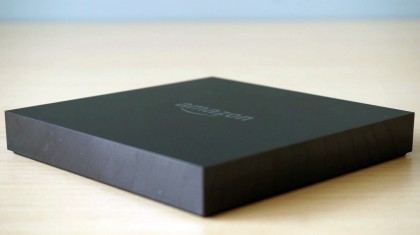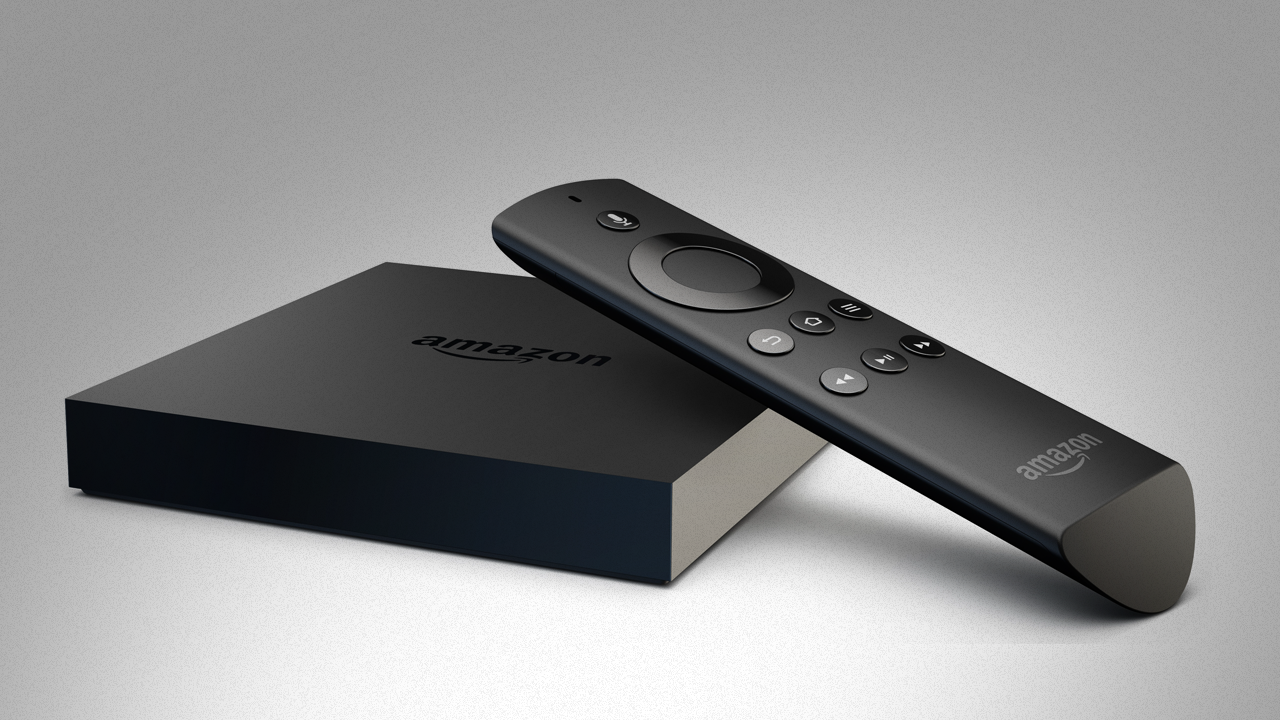TechRadar Verdict
Amazon's set-top box is elegant and powerful but not as open as it would like you to think. It's a great option, but we're looking forward to having a play with Google's forthcoming Nexus Player.
Pros
- +
Powerful hardware
- +
Gorgeous design
- +
Voice search
- +
Plex adds local streaming
Cons
- -
UI favours Amazon apps
- -
Unrefined game controller
Why you can trust TechRadar
Updated: With its 5.2 update, Amazon has brought a whole host of improvements to the Fire TV. As well as improved parental controls, Amazon has also super-charged its Alexa integration. You can now launch apps using Alexa, as well as having the voice-assistant read you books from your Kindle library.
Original review below...
With the introduction of Fire TV, Amazon has officially entered the streaming set-top box battle that may ultimately decide the future of how we get content onto our TV screens.
You can pick it up on Amazon for £79, so the device is competitive on both price and performance with Roku 3, and Apple TV seems squarely aimed at challenging those established players.
The good news is that the product, like Amazon itself, is friendly, powerful, and innovative, and tackles some of the critical consumer pain points associated with the current streaming boxes. The less good news is that it doesn't entirely live up to some of the promises Amazon is making.
Amazon has explicitly stated that it wanted to address three problem areas about the consumer streaming experience: poor performance, closed ecosystems and cumbersome search. In terms of performance they have a clear winner on their hands.
Fire TV is consistently snappy and responsive, thanks to some beefy (for a set top box) silicon inside.

In terms of its ecosystem, while Fire TV is a fairly open platform, its interface consistently tilts toward Amazon's offerings. It can't access content from iTunes or Google Play (no surprise), but does support a wide array of third party services such as Netflix and iPlayer.
However, third-party services are relegated to second-class status within Fire TV's user interface. They sit in the system's "Apps" tab, while the system's prominent Movies, TV, Watchlist and My Library tabs all feed directly to Amazon's offerings.
The system's first party offerings are always in plain view and accessible directly from the home screen. Third-party offerings tend to take some clicking and scrolling to get to.
Search has been addressed with a slick voice recognition feature dubbed Alexa that uses a microphone on the remote to allow consumers to speak their searches instead of hunting and pecking across an on-screen letter grid. With access to cloud processing to handle the heavy lifting of voice recognition, the system does an excellent job of understanding what you're trying to tell it.
However, voice searches only scan for Amazon content, an unfortunate decision that significantly undercuts the utility of this breakthrough feature.
Amazon has included some compelling extras, including the ability to view photos users have stored on Amazon Cloud Drive, and playback for Music purchased through its MP3 store.
Amazon has also put special focus on games with this system and thanks to a more powerful processor and Amazon's optional dedicated game controller - $40, around £24 - Kindle Fire's gaming options surpass the Angry Birds-level options offered on similar devices.
Most games are ports of existing Android titles that already run on the Kindle HDX, but the games not only look and play well on the system, its library of more than 100 titles at launch is quite extensive.
Content
A big part of any decision you make on what streaming box you plump for will stem from the service you most prefer, and it is in this area that Amazon's Prime offering has taken great strides in attracting an audience.
With a Netflix app in situ (although not always particularly easy to get to or search - more on that later), Amazon's service is the shining jewel in its crown, bringing a host of top quality shows that will remain exclusive for months or perhaps longer.
The Amazon Originals are at the heart of this - fed by a hugely entertaining pilots week where a handful of shows are let into the wild to see which ones attract an audience.

It's a neat idea, and it's really starting to bear fruit - the sublime Transparent has deservedly picked up a host of top TV awards, the brilliant Bosch has received rave reviews from the critics and the Michael Bay-produced Black Sails, a kind of adult prequel to Treasure Island, has got better and better as its gone on.
Every one of these series that hits gains audience, and that will translate into box sales, and that then feeds into bigger and better TV series. It's a virtuous circle with content at its heart and that's good for all of us.
James was part of the TechRadar editorial team for eight years up until 2015 and now works in a senior position for TR's parent company Future. An experienced Content Director with a demonstrated history of working in the media production industry. Skilled in Search Engine Optimization (SEO), E-commerce Optimization, Journalism, Digital Marketing, and Social Media. James can do it all.

